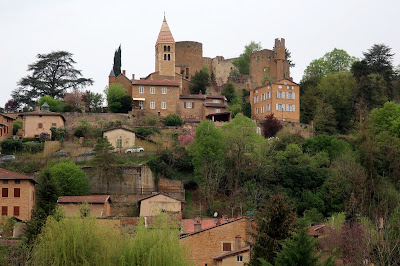Canada's Heritage Wheat: Part Two
The Red Fife Community: Marc Loiselle and the Reintroduction of Red Fife
“There are about 200,000 varieties of bread type wheats in the global shopping basket of genetic resources and yet only a few genetic lines of wheat feed the world. . . . We don’t need a test tube to create ‘new’ varieties, only a willingness to explore the diversity that already exists in the world.” (Sharon Rempel)
A Family Farm
Marc Loiselle’s ancestors moved from Quebec to southern Manitoba, south of Brandon, at the end of the 19th century. But the land was poor and better suited for grazing, so in 1904, Marc’s great great grandfather headed west to look for better land.
Vonda, Saskatchewan, a newly-established community with a church and a school, appeared to offer increased opportunities. The Loiselle family, along with six or seven other families, rented a CN train, loaded all their belongings on board, and moved to Vonda.
The Loiselle family settled and became active members of the church and community. Five generations later, they are one of the only families that has maintained a continuous presence in the community. They have always grown wheat on their farm, which was first certified organic in 1985.
Parable of the Three Talents
Various individuals (Jim Ternier, Dan Jason, Sharon Rempel) have played an important role in preserving heritage seeds, such as Red Fife, but it had ceased to be grown commercially. Jim Ternier challenged some of his farming friends to reintroduce Red Fife. Lionel Blais took up the challenge on a small scale, trucking the wheat flour to Granville Island Market to sell.
When he retired from farming, Lionel gave bags of Red Fife to three other farmers. One farmer milled it and made bread, while the second saved it but didn’t grow it as he was concerned that he would get into trouble for growing an unregistered variety. Marc Loiselle, however, sowed six acres of Red Fife in 2001. Fortunately, he saved a third of his crop for seed as his second crop in 2002 was almost wiped out by weather, disease and insects. He started over again in 2003, and this time he was more successful.
Community of Bakers
 In 2003, Marc took Red Fife to Terra Madre, an international Slow Food conference that is held biannually. Red Fife is now part of the Slow Food Ark of Taste, an international catalogue of foods that are threatened by industrial agriculture, standardization and global food markets.
In 2003, Marc took Red Fife to Terra Madre, an international Slow Food conference that is held biannually. Red Fife is now part of the Slow Food Ark of Taste, an international catalogue of foods that are threatened by industrial agriculture, standardization and global food markets.Marc was accompanied by Cliff Leir, a baker from Victoria, BC, who was one of the very first to start making and selling bread from Red Fife wheat.
Since that time, the number of farmers and bakers working with Red Fife has expanded across Canada and around the world. In Saskatoon, Earthbound Bakery, Christie’s Bakery and Three Sisters/Nestor’s all use Red Fife wheat. British Columbia has been a strong market for Red Fife. La Boulangerie Fol Epi and Wildfire Bakery in Victoria, True Grain Bakery in Cowichan (with outlets in Mill Bay and soon in Summerland) and Kootenay Bakery in Nelson have all bought Red Fife wheat from Marc and all continue to bake bread made from heritage grains.
Red Fife is now grown in Mendocino County, California (an important wheat-growing area in the 1800s), in South Carolina (Anson Mills) where it is grown as a winter wheat, and in France and Great Britain (Sheep Drove Farm). The Maritimes Heritage Wheat Project reintroduced wheat in Nova Scotia in 1998. A farmer in Manitoba is sowing 10 acres of Red Fife and plans to work the fields with horses.
“We’ve supplied enough commercial seed that we’ve worked ourselves out of a seed market, for Ontario in particular,” Marc Loiselle says. He remains, however, at the heart of the Red Fife community, a small group of farmers and bakers with whom Marc has shared his knowledge and commitment.
Valuing Diversity
Heritage seed varieties, such as Red Fife, have value far beyond their history. Red Fife has a different protein structure than modern commercial wheat, so people with gluten intolerancies have found that they can enjoy Red Fife products.
The wheat has a distinctive colour and flavour that is appreciated by artisan bakers, and Nova Scotia farmers have found that Red Fife, unlike many standard wheats, tolerates the damp Maritime climate and greater risk of disease.
 Nunweiler’s Flour Company mills and distributes Marc’s wheat. You can also purchase red fife from Daybreak Scheresky Mill.
Nunweiler’s Flour Company mills and distributes Marc’s wheat. You can also purchase red fife from Daybreak Scheresky Mill.Red fife flour is different from standard flours. Marc’s advice is to avoid adding too much flour. The dough should remain sticky, and you’ll need to oil your hands to work with it. However, this isn’t an issue if you’re making sourdough.
See also:
Part One: The History of Canadian Wheat
Mixing Up Change: Part 1, Part 2, Part 3 (Cliff Leir’s account of baking with Red Fife)
Boulangerie Fol Epi, Victoria
Daybreak Scheresky Mill, Saskatchewan
Earth Bound Bakery, Saskatoon
Three Sisters/Nestor’s Bakery, Saskatoon
True Grain Bakery and the Cowichan Valley, Vancouver Island
Wildfire Bakery, Victoria
My thanks to Loiselle Organic Family Farm for helping to sponsor my participation in the Slow Food Canada National Meeting, May 3-6, 2012.
Photo credit: Loiselle Organic Family Farm website
Follow Wanderlust and Words on Facebook and Twitter






Comments
Many farmers grow Red Fife now and it's a metaphor for people to find varieties that grow well without high inputs of chemicals and can adapt to a diversity of weather and climate. It's a variety that fed Canada from 1860-1900 and is the grandmother of many modern wheat.